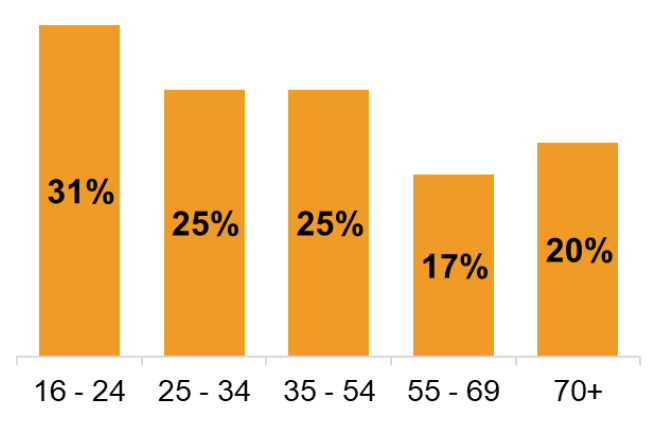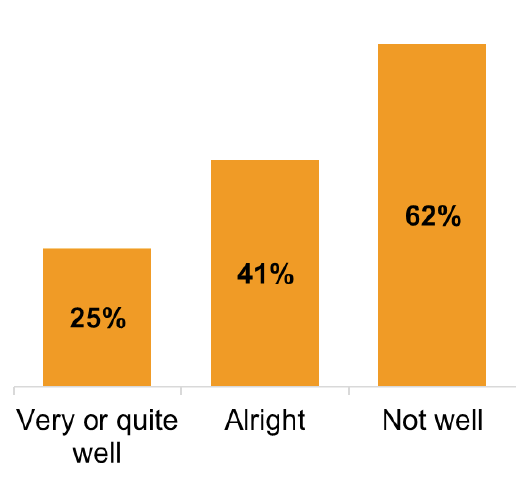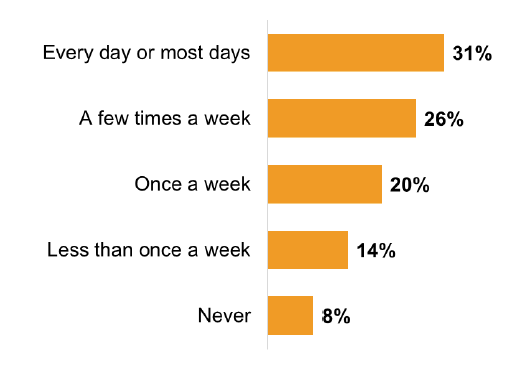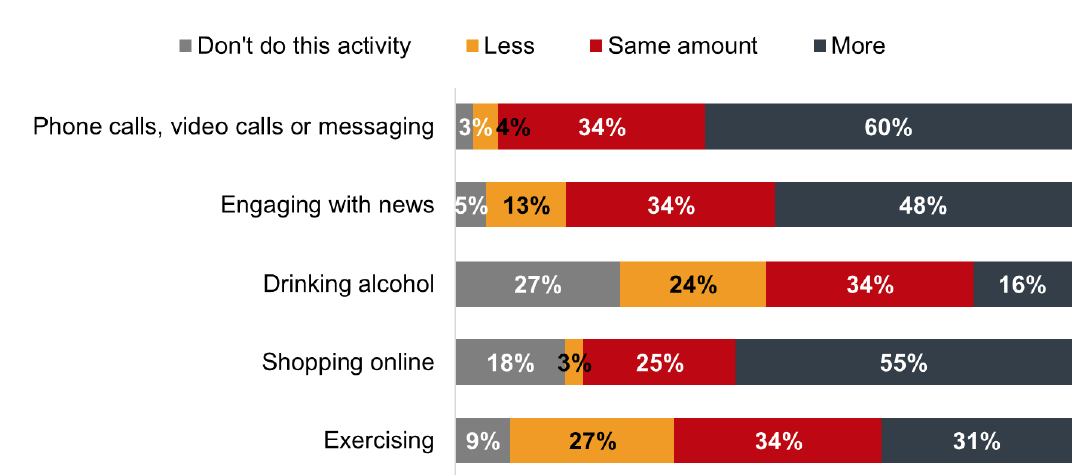Coronavirus (COVID-19) - impact on wellbeing: survey summary
This summary contains key findings from wave two of a telephone survey we commissioned to better understand the impact of the COVID-19 pandemic on people in Scotland including on work and finances, neighbourhood support, personal wellbeing, and behaviour changes.
Personal wellbeing
Average anxiety levels were slightly lower in December compared to May 2020.
Happiness levels remained similar, but were much lower than before the pandemic.
Women, younger people, those on lower incomes, and disabled people were more likely to report feelings of anxiety.[10]
Those on the lowest income band were twice more likely to report lower levels of happiness than those in the highest income band.

Please note that not all differences between age groups are significant
34% reported feeling lonely at least some of the time in the past week.[11]
The proportion of people who reported loneliness was lower in December than in May 2020.
Younger people, those on lower incomes, and disabled people were more likely to report feelings of loneliness.
People who said they were not managing well financially were more than twice as likely to report loneliness than those who said they were doing very or quite well financially.

Please note that not all differences between groups are statistically significant
51% of people aged 16-24 felt lonely in the last week. This was lower for other age groups (40% and under)
Most people (57%) said they had socialised (either in person or by video-call) more than once a week in the past month.
One in five (22%) reported they had social contact less than once a week.
Disabled people were more likely say they had less regular social contact.
In May 2020 75% said they have been phoning/video-calling or messaging more than before the pandemic. In December 2020 this had fallen to 60%

Compared to before the pandemic, more than half said they were shopping online more.
The picture was more mixed for exercise and drinking alcohol – some people doing these things more, and some less.
39% said they were sleeping badly (December 2020). This was higher than in May 2020 (29%)

Contact
Email: covid-19.behaviours@gov.scot
There is a problem
Thanks for your feedback